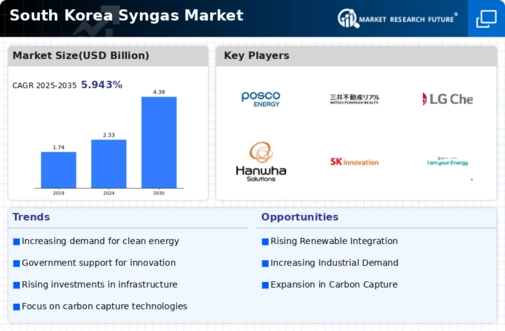The South Korea Syngas Market has become increasingly competitive, driven by the country’s strategic efforts to enhance energy security and reduce reliance on fossil fuels. The demand for syngas, which is produced from natural gas, coal, or biomass and serves as a key intermediate for various chemicals and fuels, has seen significant growth. This market is characterized by various players adopting innovative technologies and forming strategic collaborations to enhance production efficiency and sustainability. The market landscape is evolving as companies aim to leverage syngas for clean energy solutions and reduce greenhouse gas emissions, aligning with the global shift towards decarbonization.
Korea Gas Corporation plays a pivotal role in the South Korea Syngas Market, being a state-owned entity that serves as the primary supplier of natural gas in the region. The corporation boasts an extensive infrastructure that includes gas pipelines and storage facilities, allowing for efficient distribution and supply management. It has solidified its position by leveraging its strategic partnerships and investments in syngas production technologies.
The strength of Korea Gas Corporation lies in its comprehensive expertise in gas processing, reliability in supply, and commitment to research and development, which positions it favorably against competitors in the syngas sector within South Korea. SK E and S has emerged as a significant player in the South Korea Syngas Market by focusing on innovative energy solutions and sustainable practices. The company is involved in the production of clean energy through various technologies, including gas-to-liquid and biomass-to-liquid processes, which result in valuable syngas derivatives.
SK E and S has made notable advancements in enhancing syngas production efficiency and has actively pursued mergers and acquisitions to bolster its market capacity and diversify its product offerings. The company's strengths include its strong R&D capabilities, commitment to environmental sustainability, and strategic collaborations, which enable it to maintain a competitive edge in the rapidly evolving syngas landscape in South Korea. Through a robust portfolio of services focused on clean energy, SK E and S are poised to significantly influence the direction of the syngas market in the region.


















Leave a Comment